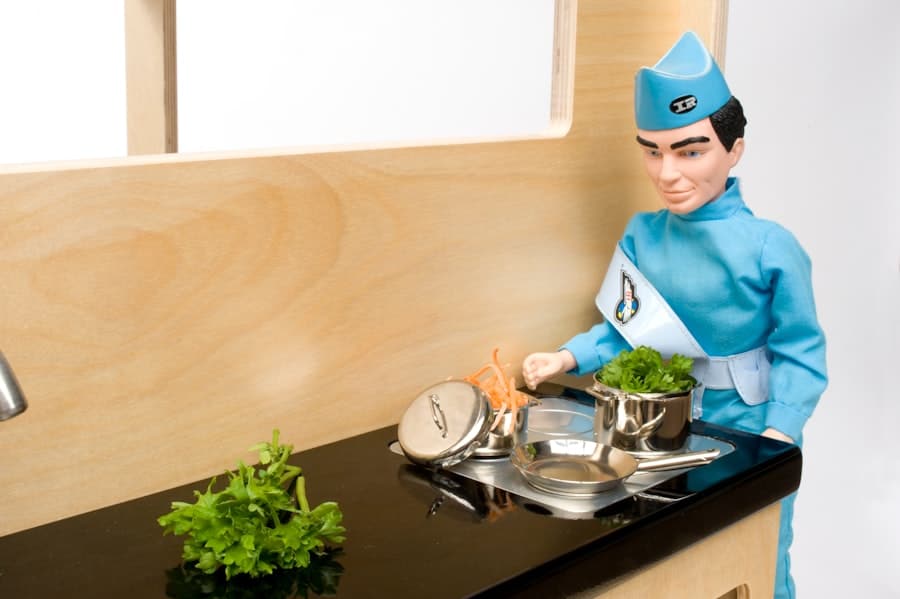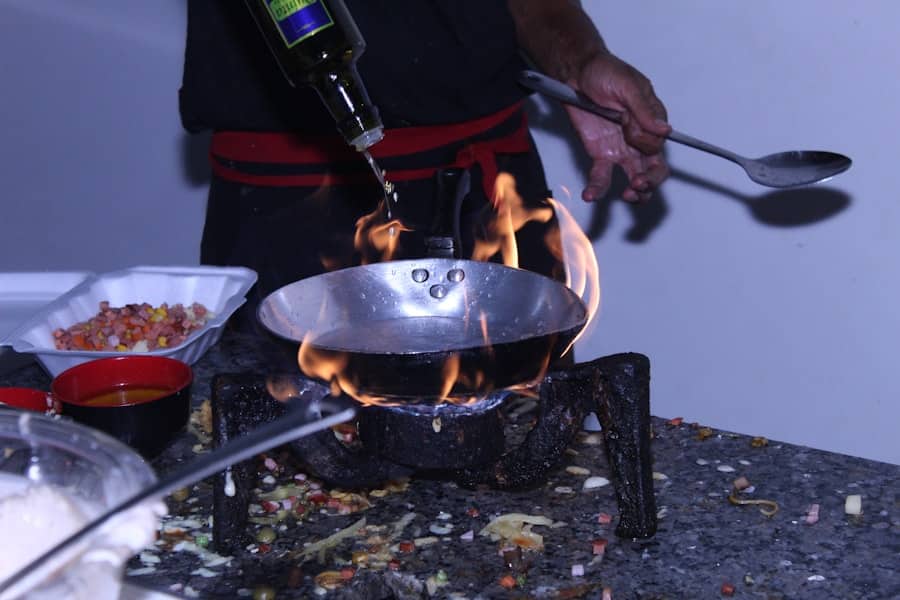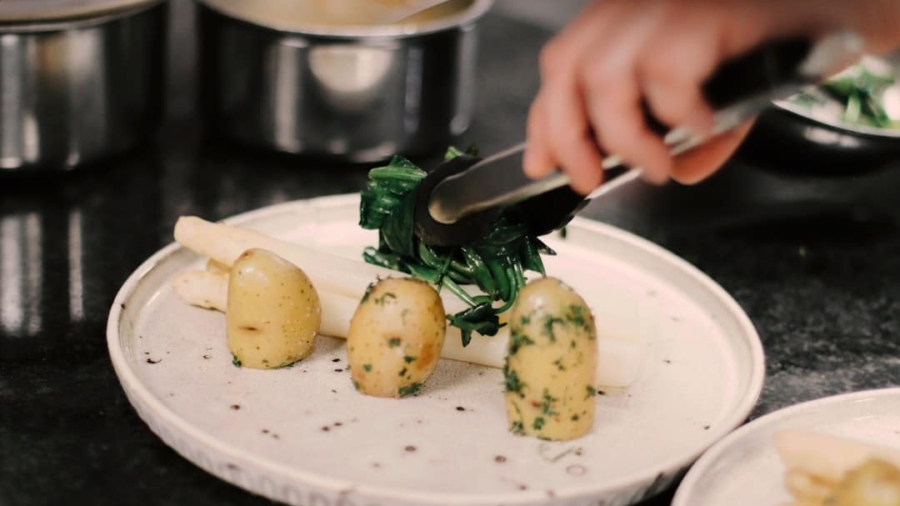The concept of smart kitchens has emerged as a revolutionary trend in the culinary landscape, blending technology with the art of cooking to create an environment that enhances efficiency, convenience, and creativity. Smart kitchens are equipped with interconnected devices that communicate with each other, allowing for seamless integration of various cooking processes. At the heart of this transformation are robotic cooking assistants, which are designed to automate tasks traditionally performed by human chefs.
These assistants range from simple appliances that perform specific functions to sophisticated robots capable of preparing complex meals with minimal human intervention. Robotic cooking assistants are not merely gadgets; they represent a significant shift in how we approach food preparation. With the ability to follow recipes, adjust cooking times, and even learn from user preferences, these devices are redefining the culinary experience.
This evolution is not just about making cooking easier; it also opens up new possibilities for creativity in the kitchen, allowing home cooks and professional chefs alike to experiment with flavors and techniques that may have previously been out of reach.
Key Takeaways
- Smart kitchens and robotic cooking assistants are revolutionizing the way we cook and interact with our kitchens.
- Advancements in robotic cooking technology have led to the development of sophisticated and efficient cooking assistants.
- Using robotic cooking assistants in smart kitchens can lead to increased efficiency, precision, and convenience in meal preparation.
- Despite their benefits, robotic cooking assistants also face challenges and limitations such as cost, maintenance, and adaptability to diverse cuisines.
- The integration of artificial intelligence and machine learning in smart kitchens is enhancing the capabilities of robotic cooking assistants and improving user experience.
Advancements in Robotic Cooking Technology
The advancements in robotic cooking technology have been nothing short of remarkable over the past few years. Innovations in robotics, artificial intelligence, and sensor technology have combined to create machines that can perform intricate cooking tasks with precision and reliability. For instance, some robotic cooking systems are equipped with advanced sensors that can detect temperature changes, moisture levels, and even the doneness of food.
This capability allows them to adjust cooking parameters in real-time, ensuring that dishes are prepared to perfection every time. One notable example of this technology is the development of robotic arms that can mimic human movements in the kitchen. These arms can chop vegetables, stir sauces, and even plate dishes with a level of finesse that rivals skilled chefs.
Companies like Moley Robotics have introduced fully automated kitchen systems that can prepare a wide range of recipes from scratch. By utilizing a combination of pre-programmed recipes and machine learning algorithms, these systems can adapt to user preferences and dietary restrictions, making them versatile tools for modern cooking.
Benefits of Using Robotic Cooking Assistants in Smart Kitchens

The integration of robotic cooking assistants into smart kitchens offers numerous benefits that cater to both novice cooks and seasoned chefs. One of the most significant advantages is the time-saving aspect.
Robotic assistants can handle repetitive tasks such as chopping, stirring, and monitoring cooking times, allowing users to focus on other activities or simply enjoy their time in the kitchen without the stress of multitasking. Moreover, robotic cooking assistants can enhance consistency in meal preparation. Human error is an inevitable part of cooking; however, robots can follow recipes with exact precision, ensuring that each dish is prepared identically every time.
This consistency is particularly beneficial for those who run catering businesses or restaurants where uniformity is crucial. Additionally, these devices can help reduce food waste by optimizing ingredient usage and portion sizes based on user preferences and dietary needs.
Challenges and Limitations of Robotic Cooking Assistants
Despite the many advantages offered by robotic cooking assistants, several challenges and limitations remain. One primary concern is the initial cost associated with acquiring advanced robotic systems. High-end models can be prohibitively expensive for the average consumer, which may limit their widespread adoption.
While prices are expected to decrease as technology advances and becomes more mainstream, the current financial barrier poses a significant hurdle for many potential users. Another challenge lies in the complexity of certain cooking techniques that may be difficult for robots to replicate accurately. While robotic assistants excel at following straightforward recipes, they may struggle with more nuanced culinary skills such as improvisation or adjusting flavors based on taste.
Cooking often requires a level of intuition and creativity that machines currently lack. Furthermore, maintenance and repair of these sophisticated devices can be complicated and costly, potentially deterring users from investing in robotic cooking technology.
Integration of Artificial Intelligence and Machine Learning in Smart Kitchens
Artificial intelligence (AI) and machine learning (ML) play pivotal roles in enhancing the functionality of smart kitchens and robotic cooking assistants. By leveraging vast amounts of data, AI algorithms can analyze user preferences, dietary restrictions, and even seasonal ingredient availability to suggest personalized meal plans. This capability not only simplifies meal preparation but also encourages healthier eating habits by promoting balanced diets tailored to individual needs.
Machine learning further enhances the adaptability of robotic cooking assistants. As these devices interact with users over time, they can learn from past experiences to improve their performance continually. For example, if a user frequently adjusts a recipe’s spice levels or cooking times, the assistant can adapt its future recommendations accordingly.
This level of personalization transforms the cooking experience into a collaborative effort between humans and machines, fostering a deeper connection to food preparation.
The Future of Smart Kitchens: Predictions and Trends

Voice-Activated Systems Take Center Stage
One trend likely to gain traction is the increased integration of voice-activated systems within kitchen environments. As virtual assistants like Amazon’s Alexa and Google Assistant become more sophisticated, they will likely play a central role in managing kitchen tasks, from setting timers to providing step-by-step cooking instructions.
Modular Kitchen Designs for Personalization
Additionally, we may see a rise in modular kitchen designs that allow users to customize their smart kitchen setups according to their specific needs. This flexibility could lead to a more personalized cooking experience where users can choose which robotic assistants or smart appliances best suit their culinary style.
Sustainability Takes Priority
Furthermore, advancements in sustainability will likely influence smart kitchen design, with an emphasis on energy-efficient appliances and waste reduction technologies becoming standard features.
Impacts on the Culinary Industry and Home Cooking
The rise of robotic cooking assistants is poised to have profound implications for both the culinary industry and home cooking practices. In professional kitchens, these technologies can streamline operations by automating repetitive tasks, allowing chefs to focus on creativity and innovation rather than mundane chores. This shift could lead to a new era of culinary exploration where chefs experiment with avant-garde techniques without being bogged down by time-consuming preparations.
For home cooks, robotic assistants offer an opportunity to enhance culinary skills without the intimidation often associated with complex recipes. By providing guidance and support throughout the cooking process, these devices empower individuals to try new dishes and expand their culinary repertoire. As a result, we may witness a resurgence in home cooking as people become more confident in their abilities thanks to the assistance of technology.
Ethical and Social Considerations of Robotic Cooking Assistants
As with any technological advancement, the rise of robotic cooking assistants raises important ethical and social considerations that warrant careful examination. One significant concern is the potential impact on employment within the culinary sector. While automation can enhance efficiency, it may also lead to job displacement for kitchen staff who perform tasks that robots can now handle.
This shift necessitates a broader discussion about workforce retraining and adaptation as industries evolve alongside technological advancements. Moreover, there are questions surrounding food equity and access to technology. As smart kitchens become more prevalent, there is a risk that those without access to such technologies may be left behind in terms of culinary experiences and opportunities for healthy eating.
Ensuring equitable access to smart kitchen technologies will be crucial in fostering inclusivity within society as we move toward an increasingly automated future. In conclusion, while robotic cooking assistants present exciting possibilities for enhancing our culinary experiences, it is essential to navigate the accompanying challenges thoughtfully. By addressing ethical concerns and ensuring equitable access to technology, we can harness the full potential of smart kitchens while preserving the rich traditions of cooking that connect us all.
If you are interested in the latest technology trends, you may also want to check out this article on smartwatches by Huawei. It provides a comprehensive review of the features and functionalities of these wearable devices. Additionally, for those in the healthcare industry, the article on the best software for NDIS providers offers valuable insights into optimizing service delivery for individuals with disabilities. Lastly, if you are looking to explore new opportunities in digital marketing, the article on

